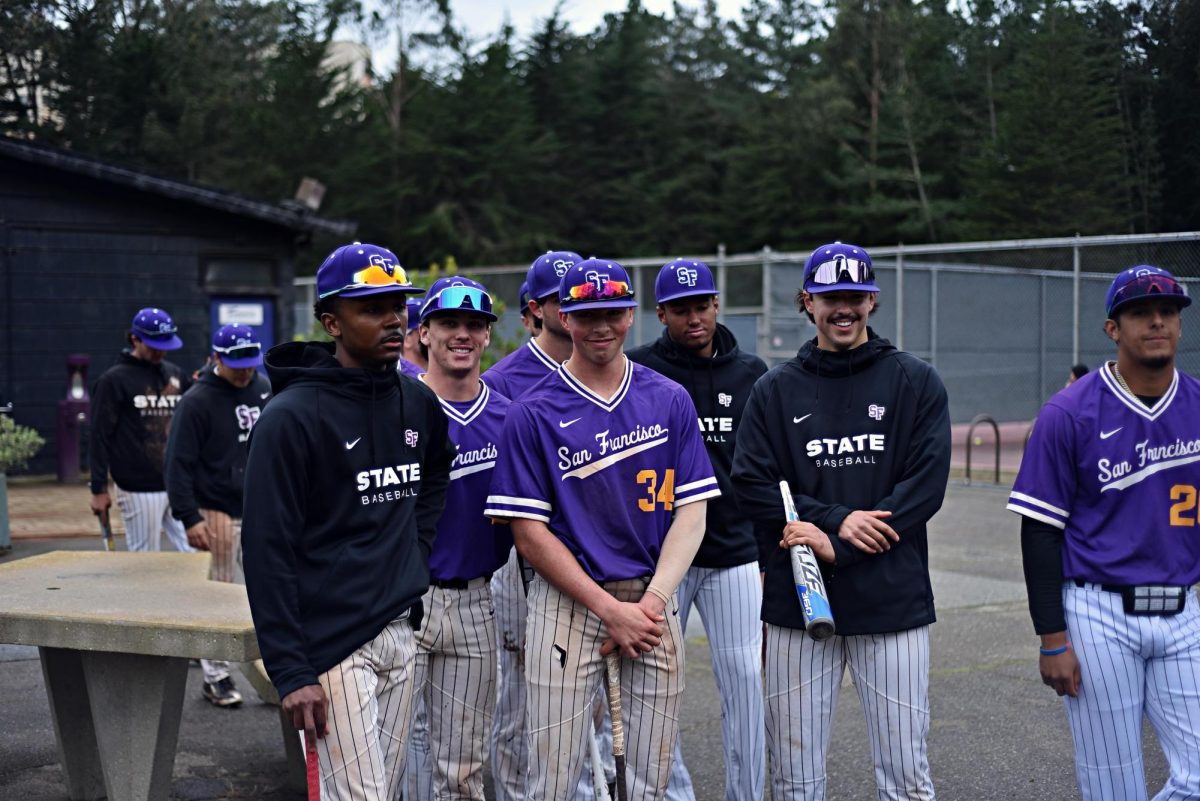Close quarters, unpredictable weather and sandy wind was the setting in which SF State student filmmakers shot their film.
“Saguaro,” is a film directed and produced by Jake Naso, Maddy Graves and Jeep Thatcher. Naso said he and his colleagues started the film about a year ago and finished filming in mid-November.
The film begins in the 1800s with two cowboys battling over a cactus and then it transitions to scenes in 2018. A similar situation arises. Two brothers battle for the same cactus, now 300 years old and more valuable.
Naso, director of “Saguaro”, thought of the plot after looking for housing in the Bay Area and hearing the story of a realtor’s experience in Arizona, in which homeowners stole each other’s cacti to increase their own property value.
“It’s kind of a film about the obsession people tend to have, and the lengths people go to for money or capital, so it’s kind of an anti-capitalist film,” Naso said.
Naso, Graves and Thatcher illustrate that student film production can at times be a harrowing and low-budget task. After Naso created the concept and wrote the film, the crew sought to film in Reno, Nevada, which did not end up working out as planned due to the weather.
“We were shooting all night and everyone was complaining because it was so cold,” said Thatcher, assistant producer of Saguaro.
The crew then set out to film in Sacramento, shortly after fires had ravaged the area. The crew slept in tents and one truck — a common lifestyle of student filmmakers, according to producer Graves.
“We had the crew camping out in tents in freezing cold weather, and we were onsite in Sacramento for three days,” Graves said. “It was an extremely difficult shooting weekend because of the hiccups and the uncontrollable, but we finished.”
Graves noted that behind-the-scenes jobs of student filmmaking are the most difficult. She described having several breakdowns during the background work, like obtaining permits and locations.
“I really believe the biggest challenge in producing is pre-production,” Graves said. “It’s the boring work that nobody wants to do, but you can’t have a smooth and efficient shoot without it.”
The crew was forced to be resourceful in creating their set and choosing where to spend their money, like the truck they used on set and to sleep in. Naso and Graves raved over the art director of the film, who resourcefully created the centerpiece of the film, the cactus, out of insulation foam and green craft paint.
The crew credits much of their skills and tactics in creating this film to the SF State cinema department.
“I would say that my film theory classes and the films I was exposed to in those classes influenced the kind of story I wanted to tell, while the production classes gave me the skills I needed to actually make the film happen,” Naso said.
Graves agrees that the SF State cinema department set her up for success in her fourth student film, Saguaro, as well as 40 short films she has worked on in the past.
“I had never produced or worked on a student film of such caliber,” Graves said. “I think that SF State has a great cinema department with incredible professors that have really helped shape who I am as a filmmaker.”
Graves, being one of the few women filmmakers at SF State, also felt as though she had to teach herself how to become a producer, another background job that led her to her success.
“There aren’t enough women in filmmaking. It’s pretty daunting, the proportion of women to men in the industry, especially here at SF State there tends to be a lot of white males really dominating in directing, writing and producing,” Graves said. “To be honest, I learned from my peers and taught myself how to be a producer.”
Graves got to pick the crew on set of the shoot, which ended up being half female.
The director and producers are proudest of creating such a unique neo-Western film that was worth all of the work.
“I’ve never been so proud or happy with myself than after the last day of filming for ‘Saguaro’,” Graves said. “Actually, making the film is something I doubted a couple times, but there’s something so amazing and self-fulfilling to have your months of work and tears be completely worth it.”
Naso said he will continue to work on the film the following semester with more background jobs like editing, sound design and recruiting a friend to create a full score for the entire film. The film will screen in May 2019.










